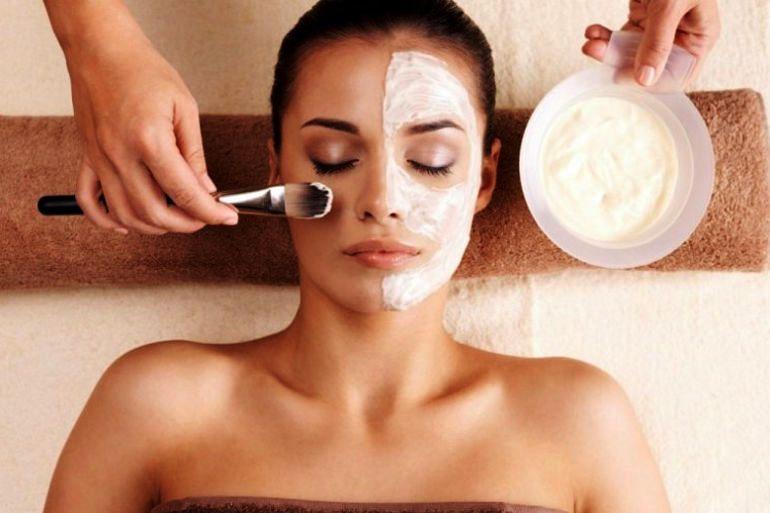Enzyme peeling of the face – reviews. Face after enzyme peeling
Enzyme peeling is another very effective way to get young skin, a flawless complexion and get rid of hated acne, enlarged pores, blackheads, blackheads, expression lines, age spots, scars and scars from inflammation. Enzyme peeling helps to remove all these imperfections from the surface of the face, it stimulates the renewal and rejuvenation of the skin.
Read: How to choose a good beautician?
Dermatologist, cosmetologist Kristina Titkova told about enzyme peeling

In enzyme peels, the main action is provided by the enzyme – protease. The enzyme breaks down the “bridges” between the cells of the outermost stratum corneum of the skin, thereby helping the exfoliation process.
The most famous plant enzymes, isolated from pineapple juice – bromelain, from papaya – papain, from figs – ficin, from kiwi – actinidain. The microbiological origin is the enzyme subtilisin from Bacillus subtilis.
Can enzyme peels be done at home? Yes, what’s more, it’s safe. The procedure is indicated in the presence of hyperkeratosis – “thickening” of the stratum corneum for any type of skin (suitable for both dry and oily skin).
Frequent signs of hyperkeratosis: uneven, dull complexion, peeling, fine wrinkles.
But! Like any procedure, enzyme peeling has a number of limitations. Such peeling should not be performed on people receiving systemic retinoids (drugs for the treatment of acne), with sensitive skin, atopic dermatitis or psoriasis, as well as other inflammatory or infectious dermatoses; immediately after sunburn (you need to wait 2-3 weeks for the skin to recover from UV damage) or after laser procedures, the presence of wounds and cuts on the skin will also be a contraindication to enzyme peeling.
For an enzyme peel to work well on your skin, there are a number of things to consider: such peeling should be applied to moisturized skin (we first cleanse the skin and tone it with a moisturizing toner), observe the exposure time recommended by the manufacturer of the preparation (on average, 10 to 30 minutes), enzymes work in a humid and warm environment, so cover our face with a warm damp compress (a towel is suitable ).
Finishing the peeling procedure: wash off with plenty of warm water and apply your own skin care cream. Enzyme peeling can be carried out on the eve of an important event, because there is no peeling after it. The procedure helps the skin to “shed” old cells and as a result, the skin shines with health, and you – beauty.
Enzyme peeling – how it works
Enzyme peels are based on enzymes and chemicals that effectively exfoliate dead cells of the epidermis. The new layer of the dermis, which remains after the procedure, no longer has the same shortcomings that were previously. Thanks to this procedure, you can prevent acne, regulate the greasiness of the skin. Small wrinkles on the face disappear, because the dermis acquires tone and elasticity, stretches. All types of hyperpigmentation are also eliminated with the help of enzymatic peeling, and this type of cosmetic work is indicated for almost all skin types. The good thing about this procedure is that the effect of its implementation can be seen almost immediately.

Enzyme peels can be superficial or deep. Superficial enzyme peeling is performed for skin with minor imperfections. Deep enzymatic peeling is able to remove from the epidermis even the cells of neoplasms that lead to cancer.
Some enzyme peels contain enzymes found in most fruits and plants – pineapple, sugarcane, manuka, kiwi, grapes, orange, grapefruit, wheat, papaya, green apples, aloe vera, pumpkin, etc. Most salon enzymatic peels with more concentrated acid solutions work much more effectively on skin with significant imperfections, even eliminating the effects of acne, scars, and age spots. Enzyme peeling is also a good anti-aging procedure that gives freshness and firmness to the aging dermis.
Since only a professional cosmetologist can choose the right concentration of enzyme peels for your skin, it is better to perform enzyme peels in a beauty salon and not experiment on your face at home.
Enzyme peeling procedure – how often should they be done?
- Face preparation. At this stage, the skin is cleansed with special toners and lotions. Then a special pre-peeling adaptogen solution is applied to the face, which allows the skin to be prepared for work as efficiently as possible.
- Enzyme peeling itself. A special composition is applied to the face in the required concentration, which depends on the type of skin and the solution to existing problems – the concentration of the agent is selected individually in each case. This procedure can be performed on the skin of the face, as well as the eyelids, neck, and décolleté. The enzyme peel is kept for 10 to 30 minutes. During this time, you can feel a slight burning sensation and tingling.
- Removing the peeling agent. The skin is washed out with plenty of running water.
- If there is such a need, the cosmetologist applies special products to neutralize irritations that appear after the procedure. You should not apply foundation products, engage in independent selection of cosmetics, because you can harm delicate skin. It is undesirable to touch the face after peeling, because otherwise areas of irritated dermis may appear.
Enzyme peeling is one of the most gentle types of chemical peeling, and therefore, on average, it can be performed 1-2 times a week, depending on the individual skin reaction to it. For dry skin, it is recommended to perform the enzyme procedure no more than once a week. For very oily, problematic, combination skin of the face, enzyme peeling can be performed 2 to 4 times a week.
If your dermis is prone to acne breakouts, then enzyme peeling should not be performed. Usually, two enzymatic peeling procedures are sufficient, with a pause of a week. The next course of enzyme peeling can be performed no earlier than 5-6 months later.

When choosing the number of required enzyme peeling procedures, you should rely on the advice of a professional cosmetologist. Enzyme peeling should not be performed with a significant excess of the concentration of solutions and the number of procedures, otherwise the opposite effect can be caused – the skin will lose its elasticity and healthy appearance, it will become dry and irritated, wrinkles and hyperpigmentation will appear on it.
Enzyme peeling results. Before and after photos
Enzyme peeling has a unique ability to give a healthy look and an even complexion, increase skin tone, firmness, elasticity, eliminate minor imperfections – post-acne, scars, age spots, neoplasms from the skin surface, smooth the face relief, make it even and radiant. But, however, you should not rely on the enzyme peeling to get rid of deep wrinkles, rough scars and scars – this peeling is able to eliminate only minor imperfections, because it is superficial.

Indications for Enzyme Peeling
- Pigmented spots, hyperpigmented skin, uneven complexion.
- Post-acne, scars and spots after acne.
- Oily skin with increased sebum secretion, combination skin.
Contraindications to enzyme peeling
- Allergic reactions, intolerance to the funds used during the procedure.
- Any skin diseases in the acute stage.
- Infectious diseases.
- Aggravated herpes.
- Diabetes mellitus, cardiovascular diseases.
- Injured skin, sunburn, fresh tan.
What to give a friend?
Gift Certificate! You can give it to your loved one or use it yourself.
And we also give away a certificate for 3000 rubles every month. among new email subscribers. Subscribe!
Select a certificate in the store
Visit Bologny for more useful and informative articles!





